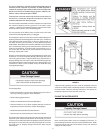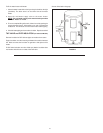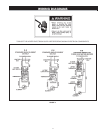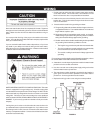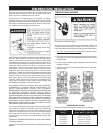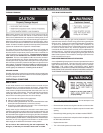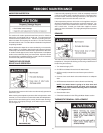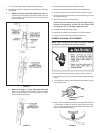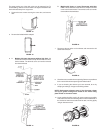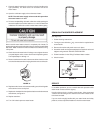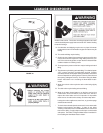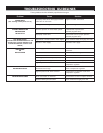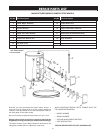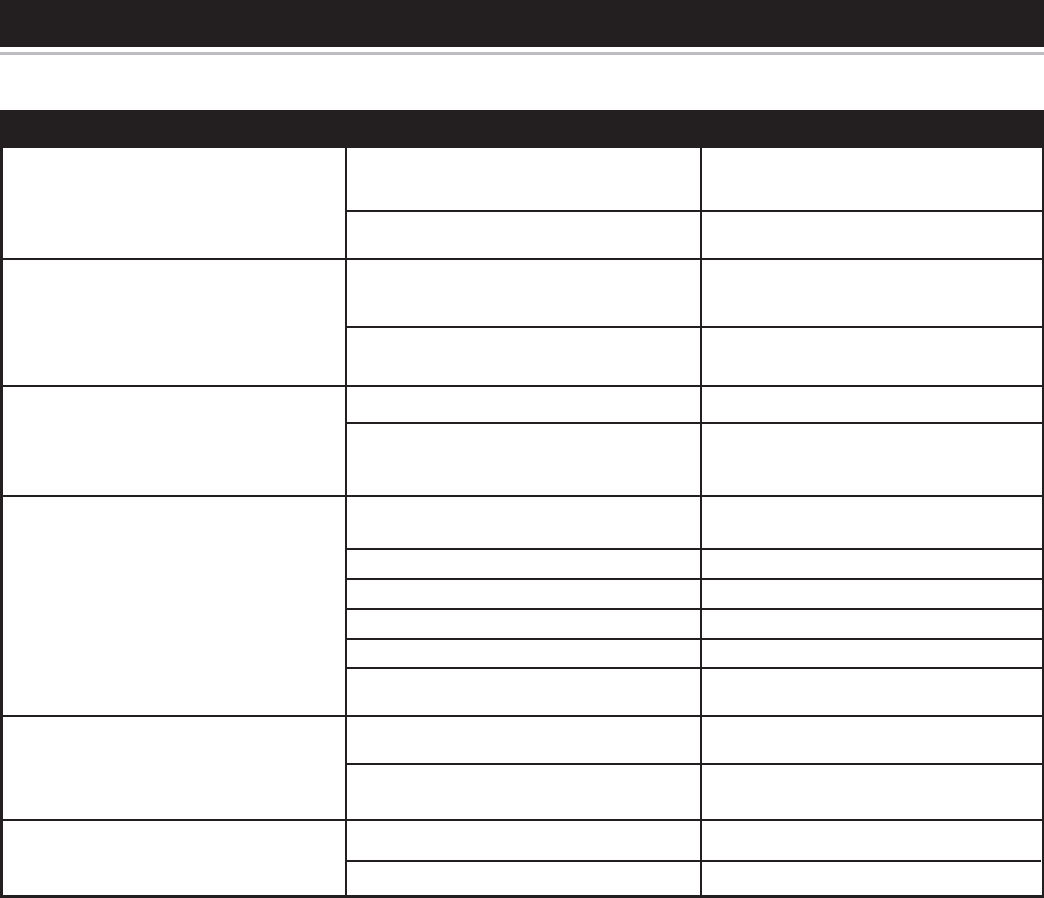
20
These guidelines should be utilized by a qualified service agent.
TROUBLESHOOTING GUIDELINES
Improperly sealed, hot or cold supply connection,
relief valve or drain valve.
Leakage from other appliances or water lines.
Thermal expansion in closed water system.
Improperly seated valve.
High sulfate or mineral content in water supply.
Bacteria in water supply.
Power supply to heater is not on.
Thermostat set too low.
Heater undersized.
Incoming water is unusually cold (Winter).
Leaking hot water from pipes or fixtures.
High temperature limit switch activated.
Thermostat set too high.
High temperature limit switch activated.
Scale accumulation on elements.
Sediment build-up on tank bottom.
Tighten threaded connections.
Inspect other appliances near water heater.
Install thermal expansion tank
(DO NOT plug T&P valve).
Check relief valve for proper operation
(DO NOT plug T&P valve).
Drain and flush heater thoroughly, then refill.
Chlorinate water supply.
Turn disconnect switch on or contact
electrician.
Refer to temperature regulation.
Reduce hot water use.
Allow more time for heater to reheat water.
Have plumber check and repair leaks.
Contact dealer to determine cause. See
temperature regulation.
Refer to temperature regulation.
Contact dealer to determine cause. See
temperature regulation.
Contact dealer to clean or replace elements.
Drain and flush thoroughly, then refill.
Problem Cause Solution
WATER LEAKS
(See Leakage Checkpoints on 19)
LEAKING TEMPERATURE
AND PRESSURE
RELIEF VALVE
HOT WATER ODORS
(CAUTION: UNAUTHORIZED REMOVAL OF THE
ANODE(S) WILL VOID THE WARRANTY FOR
FURTHER INFORMATION, CONTACT YOUR
DEALER)
NOT ENOUGH
OR
NO HOT WATER
HOT WATER TOO HOT
WATER HEATER SOUNDS



